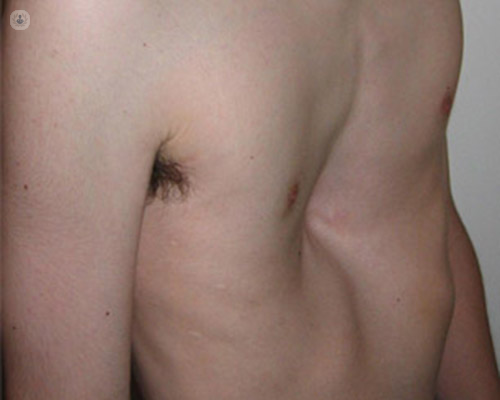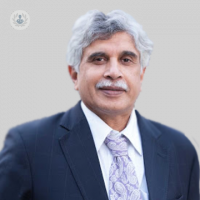Pectus excavatum and pectus carinatum: symptoms, causes, and treatment options
Written by:Top Doctors recently had the pleasure of speaking with globally renowned consultant cardiothoracic surgeon, Mr Shyamsunder Kolvekar, who, in our latest article below, explains what exactly pectus excavatum and pectus carinatum are, outlines the symptoms, and reveals the different treatment options for both chest deformities.

What is pectus excavatum, and what is pectus carinatum?
Pectus excavatum refers to a dip in the chest (funnel chest), and a pectus carinatum is what is commonly known as ‘pigeon chest’, where a breast bone is present and visible in the middle of the chest, and there is cartilage on the side.
Occasionally, the ribs can push the breast bone down (pectus excavatum), and sometimes they push the breast bone forward (pectus carinatum). Patients can actually suffer from a combination of both, which is very much related to scoliosis.
What are the main causes of these two chest deformities?
The causes of pectus excavatum are relatively unknown, but my personal opinion is that there is some sort of developmental disruption when it comes to the message the ribs are sending out when they are trying to align themselves correctly. They keep growing as a result of this disruption, which either leads to the chest going inwards or outwards.
What are the associated symptoms?
A major and common symptom seen in patients with pectus excavatum is breathlessness when they exercise, because they have less space in their chest for their lungs to properly expand. Other symptoms include leaky valves and low blood pressure, and an irregular heartbeat, which all occur as a result of the heart being pushed slightly to the left.
What are the treatment options for both pectus excavatum and pectus carinatum?
Implants might be an appropriate and suitable option for patients suffering from either pectus excavatum or pectus carinatum, or a mixture of both. Previously, there was only one operation, where we would make a cut down the middle of the chest in order to take out all the cartilage and to lift the chest up (pectus excavatum) or push the chest down (pectus carinatum).
One of the most modern non-surgical treatments we have available now for pectus carinatum are braces, where we take a 3D image of the patient’s chest and we design the braces specifically for that patient. There is a front piece and a back piece that both gradually keep pressing on your chest and gradually reduce your carinatum to normality.
This treatment option takes up to between nine months to a year, but you will start to see the results after three months. For pectus excavatum, braces might not have a good result, so for young children, particularly around the ages of 15 and 16, we put a vacuum belt on them, and they wear this for up to four hours a day. Swimming and simple stretching can really help with both conditions.
Is the treatment different for children and adults?
Yes. If you are under 40, we can perform keyhole surgery, where we design a bar specifically for the patient to push the chest up. We can actually put between one and three bars. If you are above the age of 40, you will have to have the cartilage removed before any bar is introduced into the chest to help treat both pectus excavatum and pectus carinatum.
Mr Shyamsunder Kolvekar is a highly experienced consultant cardiothoracic surgeon who is an expert when it comes to both pectus excavatum and pectus carinatum. Check out his Top Doctors profile today to book an appointment with him.


